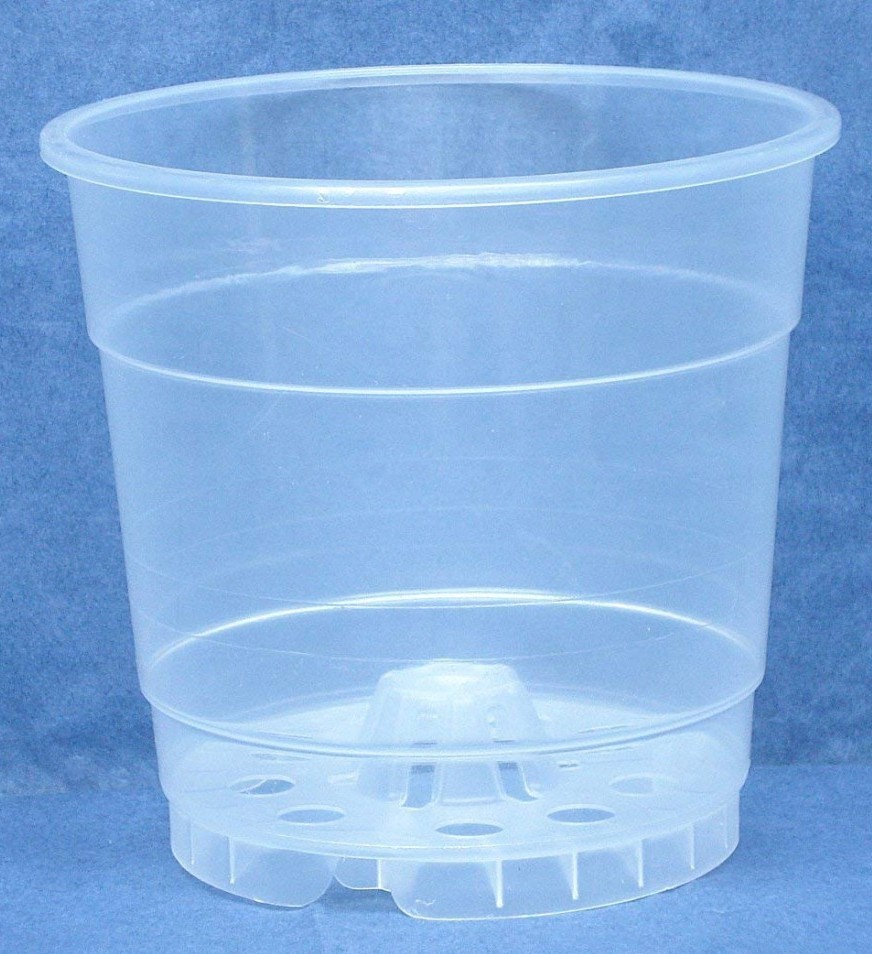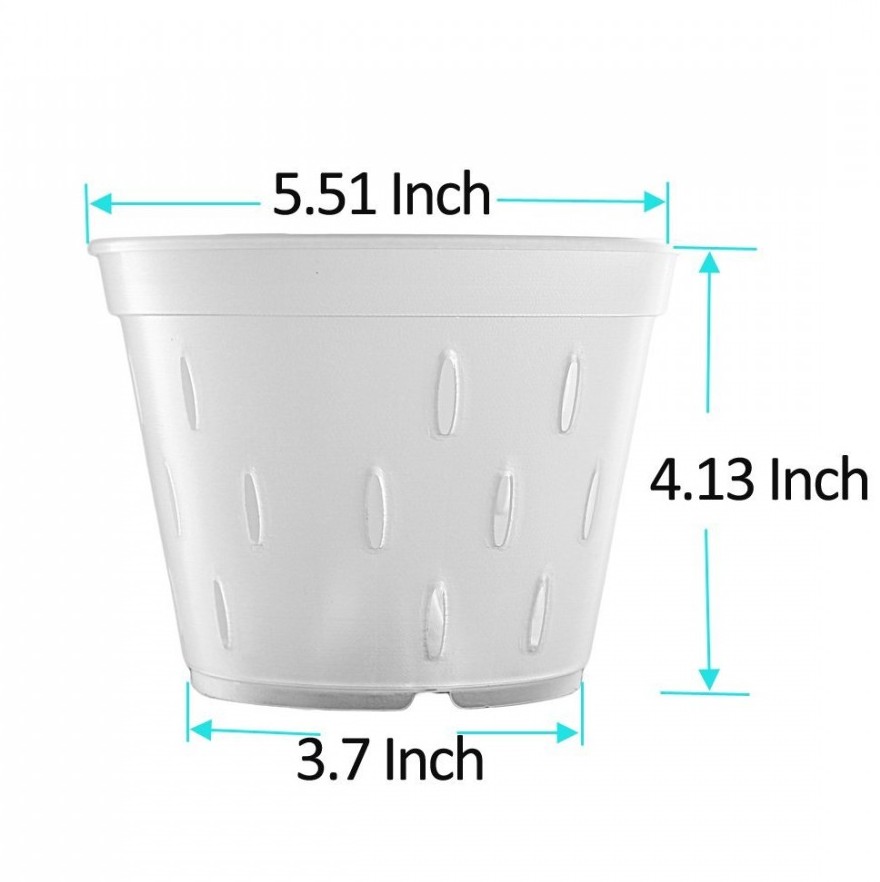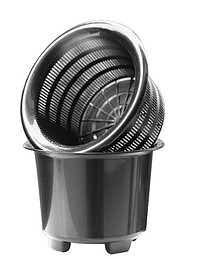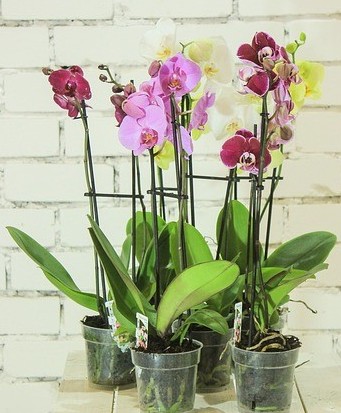Orchid pots are as unique as the orchids themselves. More often than not, people have no idea (including myself at one time), that orchids cannot live in the same design of pots that most other houseplants are happy in.
In their natural habitat, Phalaenopsis orchids are epiphytes. Yes, I’m getting all fancy and technical with my terminology! All it means to be an epiphyte is that Phalaenopsis orchids derive their nutrients and moisture from their natural surroundings, not from the soil. This is why choosing the right orchid pot is necessary, but not overly complicated once you know what to look for.
Here at my Potted Opulence Shop, you will find a great selection of some of the best orchid pots available.
Orchid Roots Are Unique
Orchid roots can pull moisture from the air in the same manner that air plants do. Because they are epiphytic, Phalaenopsis orchids cannot survive in your standard potting soil or pot. Their roots will suffocate and rot.
Root rot is most commonly fatal to the orchid. There are some cases of root rot where the orchid can be saved, but it will take some very serious tender loving care, time investment, know-how and definite patience. To prevent root rot or the heartache of losing your beloved orchid, buying the right orchid pot and potting media to begin with is critical.
In case you are stumbling upon this post after purchasing (or rescuing) a Phalaenopsis orchid from a retail store, you will need to know that if your orchid is currently housed in a pot that has no holes or only one drainage hole in the bottom of the pot, it should be repotted once the orchid drops its blooms.
So, I’m glad you’re here reading this! It is acceptable to have an outer pot that is solid with less drainage for decorative purposes, but there must be an inner pot that has multiple holes all along the bottom of the pot and preferably along the side walls as well for maximum air flow and light transmission.
Guidelines For The Decorative Outer Pot
It is also important to mention that you should still be careful when selecting the outer pot as well. Even when you have a proper inner pot with sufficient drainage, if the outer pot is too snug and leaves no room for the inner pot to breathe, this can in the future cause some complications.
You would also need to be extra careful to avoid water pooling in the bottom of your decorative pot. This can be avoided by simply giving your orchid ample time to drain out after watering before placing it back in the outer shell.
“The Beginner Pots” 
I call these the beginner pots because this is typically what a store bought orchid will be in to begin with. The only exception to this would be if your orchid is not in a proper orchid pot at all and is in a container with no holes.
As explained in the above paragraph, in that scenario, your orchid will surely rot and die. Therefore repotting when blooming has ceased is required.
Usually they are 4 to 4.5″ in diameter. You will find many opinions concerning whether the absence of holes throughout the sides is acceptable. My opinion is this: If there is a raised center (such as the one pictured), these particular pots have helped my sickly orchids receive increased humidity without drowning their roots.
Pots with holes all throughout the sides, for obvious reasons, increase air flow and do tend to dry out a little quicker. That may or may not be what your particular orchid needs. The health of your roots is what you will need to pay close attention to. My post about trimming orchid roots will help you with identifying whether your roots are in good condition.
“The Second Home” 
When it’s time to repot your orchid, whether it be due to outgrowing its home or being in the wrong environment to start with, these pots are what I call the “second homes.” Typically they are 5.5 to 6″ in diameter.
As a general rule of thumb for healthy roots, an increase of 1 inch in diameter from the original pot is recommended. 2 inches may be necessary in some cases.
A very important factor to keep in mind is to never choose the size of your pot based on the size of your orchid’s foliage. Always choose the pot size based on the orchid root volume. Choosing an orchid pot that is too large for your orchid’s root system causes a whole host of problems, including watering issues and delayed flowering.
Orchids enjoy being snug but not overly crammed. If you can gently lower your orchid’s roots down into the pot and there is enough room for them not to be jammed in but still snug, you’ve got the right size. Don’t think you’ll be doing your orchid a favor by giving it lots of room 🙂 Just enough room to breathe and grow but still be supported is just right.
Also, don’t be afraid to downsize as well. If upon trimming your orchid’s roots, there is not enough root mass to warrant a 5.5 or 6″ pot, that’s okay, go back down to a 4.5″ pot with fresh potting medium.
Baskets and Net Pots 
Orchid net pots are containers I have become especially fond of in recent months when repotting my orchids. Net pots allow for maximum air flow, flexibility and light transmission for photosynthesis.
Net pots, like clear orchid pots, come in a variety of sizes to match any need.
Choosing Made Easy!
Choosing the right sized pot for your orchid isn’t as daunting as it may have initially seemed, right? Just always keep in mind, choose based on root mass, not foliage size. Your orchid will thank you.
I hope this article has helped you. If you have any questions, I’d love to hear from you.

Leave a Reply